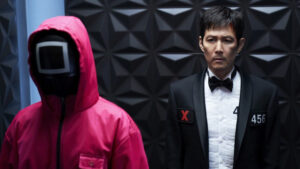
“Mariupol is diseased,” says John, a resident of the Russian-occupied city, as he describes the stark contrast between the reality of life in Mariupol and the narratives portrayed by Russian media. The city, seized by Russian forces over three years ago, remains largely in ruins despite claims of reconstruction efforts. John, whose name has been changed for safety, shares his firsthand account of living amidst the rubble and decay.
According to John, the Russian authorities have focused on repairing facades on main streets for show, while much of the city remains devastated. “What they’re showing on Russian TV are fairy tales for fools,” he asserts. This sentiment is echoed by Olha Onyshko, a former resident who fled to Ternopil. She describes Mariupol as a once beautiful city now left in disarray.
The Reality Behind the Facade
Mariupol, a city that endured a brutal siege resulting in thousands of deaths and the destruction of 90% of its residential buildings, is far from the glossy image portrayed by pro-Russian influencers. Videos circulating in recent months suggest a city reborn, yet residents and escapees paint a different picture.
Olha Onyshko recounts the grim reality: “There’s a central square – only the buildings there have been reconstructed. They cleared the debris, but they didn’t even separate out the dead bodies, they were just loaded onto trucks with the rubble and carried out of the city.”
Basic Needs and Infrastructure Challenges
Residents are grappling with severe water shortages and unreliable power supplies. James, another resident whose name has been altered for security reasons, describes the water crisis: “Water flows for a day or two, then it doesn’t come for three days. The colour of the water is so yellow that even after boiling it, it’s scary to drink it.” Some have likened the water’s appearance to “coca cola.”
Serhii Orlov, Mariupol’s deputy mayor in exile, explains the situation:
“Only one reservoir was left supplying water to Mariupol. For the current population, that would’ve lasted for about a year and a half. Since occupation has lasted longer than that, it means there is no drinking water at all.”
Residents also face scarcity of food and medicines, with basic necessities becoming increasingly expensive. “Diabetics struggle to get insulin on time, and it is crazy expensive,” James reports. The BBC has reached out to Mariupol’s Russian administration for a response but has yet to receive a reply.
Education and Propaganda
Beyond physical hardships, the psychological impact on Mariupol’s residents is profound. Andrii Kozhushyna, who studied in the city under occupation before escaping to Dnipro, describes the indoctrination in schools. “They are teaching children false information and propaganda,” he says, noting that textbooks claim several Ukrainian regions are part of Russia.
Special lessons titled “Conversations about Important Things” instill narratives about Russia liberating Russian-speaking populations. Teachers who resist these lessons face intimidation or dismissal. John, still in Mariupol, likens it to reprogramming the minds of children.
Resistance and Hope
Despite the oppressive atmosphere, a clandestine resistance movement persists. Residents like James and John, along with Andrii during his time in the city, engage in acts of defiance. They spray paint Ukrainian colors on walls and distribute leaflets with messages such as “Liberate Mariupol” and “Mariupol is Ukraine.”
The resistance efforts extend to intelligence gathering for the Ukrainian military. James explains his role:
“I document information about Russian military movements. I analyse where they are transporting weapons, how many soldiers are entering and leaving the city, and what equipment is being repaired in our industrial areas.”
As Mariupol remains a focal point of the ongoing conflict, the resilience of its residents underscores the enduring spirit of those who refuse to be silenced. While the city may be draped in the colors of the Russian flag, the heart of Mariupol beats with the blue and yellow of Ukraine.






